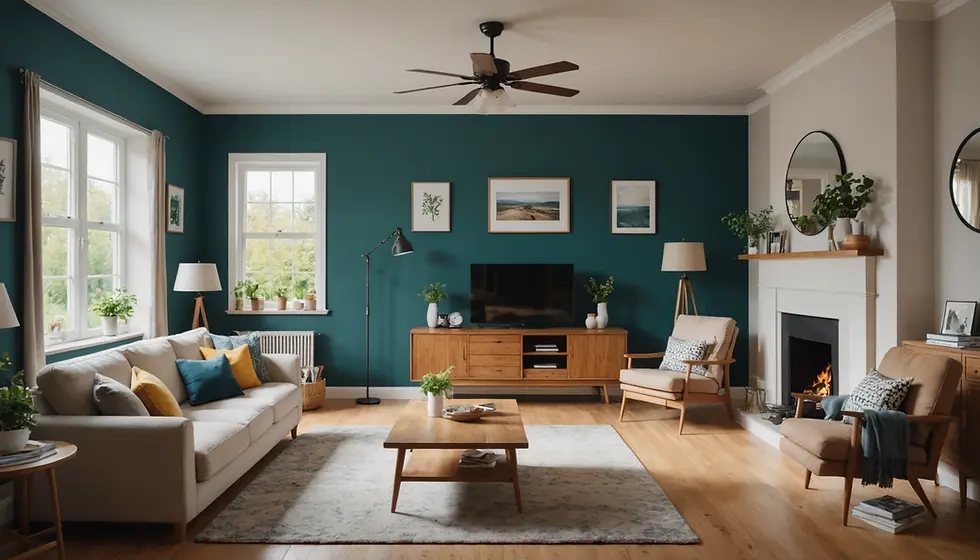Uncovering the Unseen: Expert Strategies for Planning and Designing a Premium Interior Space
- SILA

- Jan 27
- 4 min read
Creating a premium interior design is a rewarding challenge that goes beyond just choosing stylish furniture and colors. This process demands a strategic approach that combines beauty with practicality. The goal is to produce spaces that are not only attractive but also comfortable and usable. Whether you’re designing a luxurious home, a trendy boutique, or an elegant restaurant, mastering the art of planning and design is crucial for achieving exceptional results.
Understanding the Core Principles of Premium Design
At the foundation of premium interior design is a clear understanding of space, composition, and how people interact within that space. Every successful project starts with an assessment of the area, including examining the architecture and taking precise measurements. Identifying unique features and potential issues can guide your design choices.
Key elements such as balance, proportion, and harmony foster visual interest and orderliness. Designers often leverage technology, utilizing CAD software or 3D modeling, to visualize concepts and enhance spatial understanding before any physical changes are made.
While aesthetics are important, understanding how the space will be used is equally vital. For example, a high-end living room should facilitate conversation and gatherings. Thoughtful planning must also account for the occupants' lifestyle, ensuring that the space feels both beautiful and functional.
Choosing the Right Color Palette
Color greatly influences mood and perception. For premium interior spaces, selecting a refined color palette is essential. Neutral tones like taupe, beige, and soft gray serve as timeless backdrops, allowing for more vibrant accents like deep blues or rich emerald greens to provide depth and character.
Understanding color psychology can guide your choices. For instance, studies show that blue hues can lower heart rates, making them suitable for bedrooms or relaxing areas. In contrast, reds and oranges can stimulate appetite and conversation, making them ideal for dining spaces.
Textures also play a role—it’s not just about the color. A matte finish can absorb light and provide a softer feel, while a glossy surface can bounce light, making it appear more vibrant. Pairing these finishes can elevate the perceived quality of the design.
Furniture Selection and Placement
Choosing the right furniture significantly affects the atmosphere of a space. Premium furniture should showcase not only style but also durability and comfort. Look for high-quality materials like solid woods, fine leathers, and luxurious fabrics. For example, selecting an Italian leather sofa can enhance both comfort and sophistication.
Placement is equally important. The layout should encourage smooth movement throughout the room. A common guideline is to maintain at least 18 inches between seating, so guests can move freely. Use focal points, such as a dramatic piece of art or an intricately designed coffee table, around which to arrange the other elements.
Keep in mind that premium design is about crafting experiences. Consider how people might interact within the space, ensuring there are clear pathways and no obstructions that disrupt the flow. Creating communal areas, like a cozy seating arrangement, can foster connection and social engagement.
Lighting: A Key Element in Design
Lighting is crucial in setting the mood and functionality of any interior space. In premium design, employing layered lighting—ambient, task, and accent lighting—is a must. Ambient lighting creates a soft overall glow, while task lighting focuses on specific activities like reading or cooking. Accent lighting highlights artistic features or architectural details.
For flexibility, consider incorporating dimmer switches. This feature allows you to adjust brightness for different occasions, enhancing the atmosphere as needed. Investing in custom lighting fixtures can also elevate the design, with options that act as conversation starters.
Leveraging natural light is another way to enhance an interior. Large windows can bring in sunshine and views, while reflective surfaces—like mirrors or glossy furniture—can amplify light. Moreover, skylights can introduce additional daylight, making the space feel more open and inviting.
Incorporating Art and Accessories
Art and accessories serve as the personal touch that can elevate your space from good to exceptional. They express individuality and can tie together the overall design. When selecting art, consider larger pieces that resonate with your design theme, and avoid cluttering the walls with too many small items.
Accessories like decorative pillows, throws, and unique decorative objects add warmth and character. Instead of overwhelming the space, be selective by choosing a few standout items that can serve as focal points. A well-placed sculpture or an eye-catching vase can become a great conversation starter.
Sustainability in Premium Interior Design
In today’s environmentally conscious climate, sustainability is critical in premium interior design. Opt for sustainable materials, energy-efficient lighting, and eco-friendly finishes whenever possible. Research shows that using reclaimed wood can reduce carbon footprints and add unique character to your design.
Incorporating plants into your interior can improve air quality, adding a refreshing element of nature. Studies indicate that having greenery indoors can reduce stress and improve well-being. Using recycled materials or ethically sourced textiles helps support sustainable practices and modern sensibilities.
Choosing timeless designs that won’t require frequent updates can minimize waste and maintenance. This approach not only aids sustainability but also ensures your space remains stylish for years to come.
Creating Luxurious Experiences
Planning and designing premium interior spaces involves a careful balance of style and practicality. Thoughtful consideration of space, deliberate selection of colors and materials, strategic furniture placement, effective lighting, meaningful art and accessories, and sustainable choices all contribute to a sophisticated and functional environment.
Ultimately, premium interior design is more than just visual appeal; it’s about crafting experiences that inspire, comfort, and impress. By applying these expert strategies, you can transform ordinary areas into extraordinary havens that enhance the quality of life.




Comments